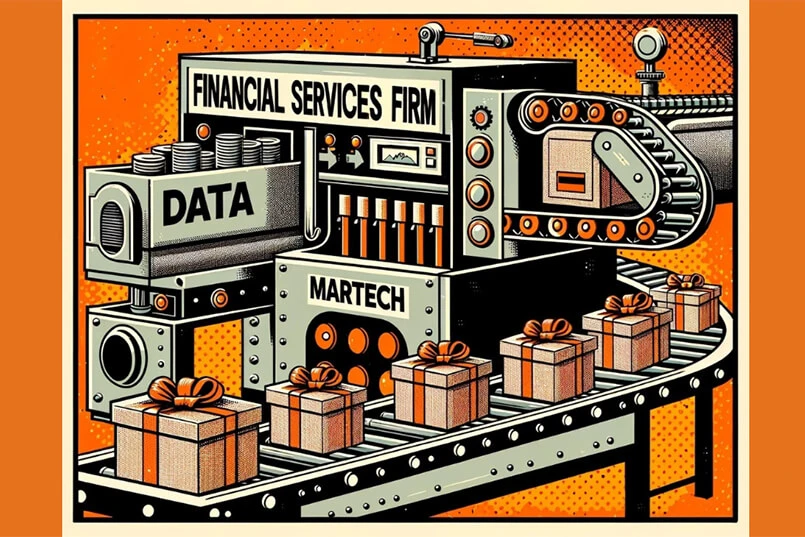Each year at TrinityP3, we work on many large strategic marketing transformation projects. Ranging from marketing performance solutions to technology solutions to roster alignments, most of what we do will often involve a lot of people across quite complex organisation structures.
Depending on the brief we will engage with CEOs, CMOs, CFOs CTO’s or procurement, as well as pretty much everyone in between. And at times it can, quite rightly, feel like everyone in the business is invested in or involved with the brief we are answering.
Mostly, things run relatively smoothly. We will engage from the outset with a project lead (or two) and be introduced to other stakeholders as the task at hand progresses, or it is deemed necessary. Sometimes, when asked, we will advise up front on who the stakeholders should be, based on the brief and our experience in answering similar business issues.
Life is good. Until those times when it doesn’t run smoothly, and we are left to answer a brief whilst jumping through hoops to please a myriad of stakeholders armed with different and conflicting agendas. When this happens, it can feel like we are performing in a circus without a ringmaster (and the lions are circling).
You see, stakeholder management is a bit like running a circus. Many people are involved, many moving parts and things can quickly go awry if someone does not understand their part in the action. From our experience, we know very quickly from the start of a project if the internal stakeholder management is going to run well. This means we can also tell quickly when it will not run well, and we will be dealing with internal obstacles caused by stakeholder disarray.
So, if you have a large-scale project coming up here are 5 tips to help you nail stakeholder management and make sure you end up feeling like a ringleader instead of a trapeze artist without a safety net.
5 signs stakeholder management will run well
1. Trust has been established
Good stakeholder managers build trust across the business, quickly. Ideally, as consultants, we should walk into a business environment that is already on board with the brief at hand, is confident in the person leading the project and is excited about the impending outcome (well, as excited as anyone not in marketing gets about marketing).
A project lead that does not have the confidence of the stakeholders involved is guaranteed to be marred by unnecessary delays, politicking and second guessing and, in some cases, brief abandonment as it all becomes too hard to push forward.
Tip: Before you start the project, spend time communicating the purpose, process and outcome for the brief and how it will benefit the business (and the stakeholder).
2. The stakeholders are the right stakeholders
It is imperative from the get-go that the right stakeholders are included in a project. If this is not done or not done properly, projects will inevitably be delayed, impeded or at the very worst, cancelled. It is the nature of the organisational beast that not all stakeholders will benefit equally from the outcome of the work we do, for a multitude of reasons.
Nevertheless, the best-case scenario is to have all stakeholders identified and engaged before a brief is signed off and implemented. The worst case scenario is a stakeholder cohort that is complex and many when it doesn’t need to be or stakeholders appearing suddenly from the sidelines staking a claim in the project outcome.
Tip: Spend time establishing the must-have versus nice-to-have stakeholders. Must-have stakeholders are those whose input will make decisions and impact the project the right way. The nice to have are there for window dressing.
3. Stakeholders have been grouped and ranked
This sounds quite clinical, but it comes down to the project lead establishing up front the hierarchy of stakeholders involved and how important their ‘buy-in’ is to the progression of a project. From high-level to low-level stakeholders, or the ringmaster to the lion cage cleaner, grouping and ranking them will allow the project lead and us to develop and disseminate the appropriate content to the right people at the right time.
This will allow people to focus on what is important to them, their team and their day-to-day. It will also allow us to identify potential negative influencers who may need additional consultation or communication along the way.
Tip: There are several places you can start when grouping and ranking stakeholders, one such place is by assessing the impact the brief outcome will have on them or their team (directly and indirectly).
4. Informed stakeholders
The best project leaders will spend time prior to the project kick off engaging with and informing stakeholders of what is to come, their expected level of involvement and key project timings. In a way, they will brief the key internal people about the brief.
This is an integral part of a project for us as it means we can hit the ground running and keep the show running at a steady pace as each stakeholder group enters at various project stages. It also allows us and the project lead to manage inevitable absenteeism or complex work schedules that always arise in big organisations.
Tip: Factor in and be prepared for inevitable absenteeism and unavailability by requesting that stakeholders nominate a proxy for when they are away.
5. Empowered project lead
The right stakeholder group will achieve nothing if the project lead is not empowered to run the show. We have been in numerous situations when individual stakeholders have railroaded a project by openly dismissing it or the decision-making process because they deem the project leader (or the project) to be ‘beneath them’ in the organisation. I wish this was not true.
To be successful a project and its leader must have the backing of the senior management or executive leadership team. Having this demonstrates to the broader organisation that it is a strategically important piece of work rather than a tyre-kicking exercise by the marketing or procurement team.
Tip: Have the executive leadership team kick-off communication about the project to the wider stakeholder team and make sure you, as a project lead, communicate up at critical points. This will ensure you ‘keep the ear’ of the leadership team and they are abreast of any decisions, concerns, issues or impediments that are happening around the project.
Defining and managing stakeholders is one of the best ways of achieving success when dealing with your organisation’s marketing needs.
How aligned is your marketing team with your organisation? Read more on how TrinityP3 brings best-practice thinking to bear in the delivery of your marketing transformation.




